Strava’s Year In Sport Shows The Impact The Pandemic Has On Our Exercise Habits

So much of the way we live our lives has shifted as a result of the COVID-19 pandemic, including how we stay active. Every year Strava shares its “Year In Sport” report based on data from its users and, not surprisingly, the onset of the virus in March caused a massive shift in how participants across the world exercise. While the data usually showcases trends in both habits and the brands of products people are using to capture data, this year’s report—curated from 73 million total participants—focuses more on how activities shifted differently across the globe, as well as how routines (both in exercise mode and in time of day) transitioned through the new normal. Here are some of the key takeaways.
The Onset of The Pandemic Got People Moving
If the order to work from home, parent from home, school from home (i.e., do life from home) made you want to get outside and move (from a safe distance from others), you’re not alone. Strava shared a graph showing its projected global weekly activity based on past trends versus the actual count—the result? A sharp increase in the second week of March through September, when both actual and expected declined, due to chilly temps in the Northern Hemisphere.
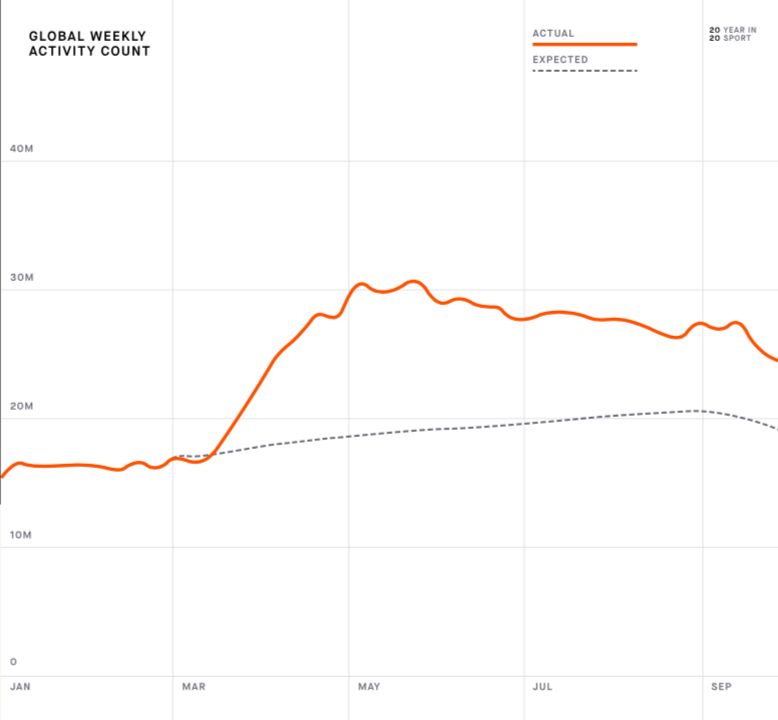
But It Depends On Where You Live
While overall activity was up, that came largely from countries where exercising outside was still allowed without restrictions. The story is different for places like Spain and Italy, where strict lockdowns in March and April kept more people indoors completely. The drop in weekly outdoor activities was initially steep—down to almost nothing—and then peaked in May when the restrictions were eased.

The sharp increase showed in the first section came largely from countries like the United States, United Kingdom, Ireland, and Germany, where there were generally fewer restrictions on what participants could do outside.
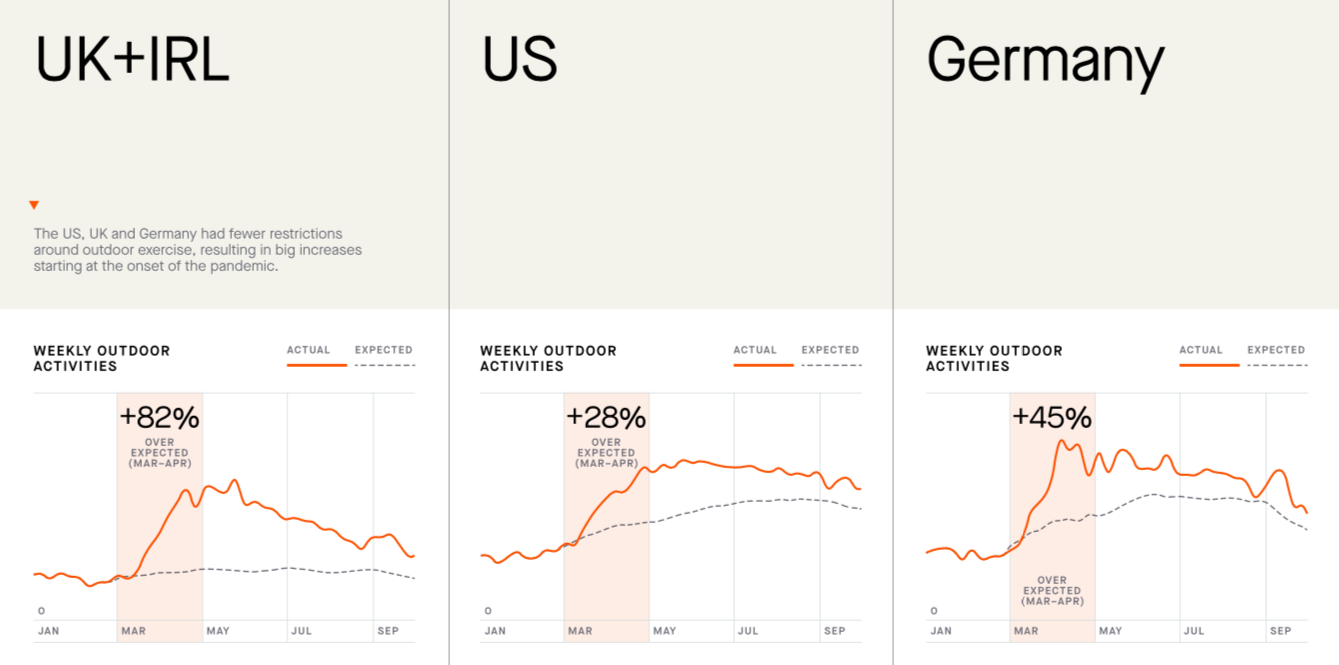
Future Triathletes?
Perhaps the most exciting stat out of this year’s report for triathletes is that more runners are cycling and more cyclists are running—could this foretell a boom of new triathletes in 2021?
In stats from April to June, 11.2% of runners uploaded an outdoor ride for the first time. On the other end, 5.6% of cyclists uploaded an outdoor run for the first time. Both runners (8.5%) and cyclists (11.2%) enjoyed more leisurely activities by uploading an outdoor walk for the first time.

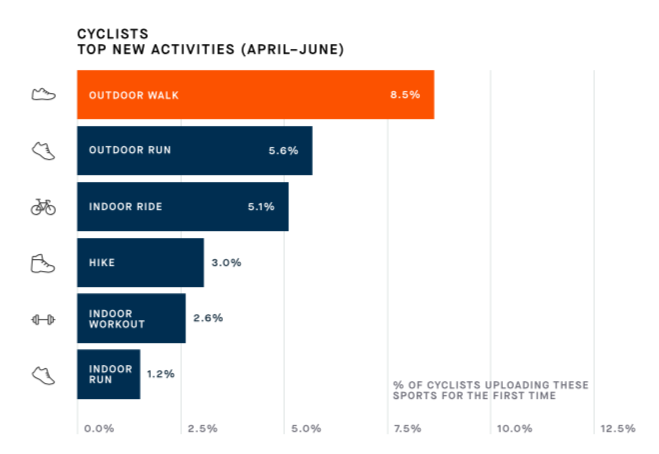
Women, Younger Athletes Lead the Growth
In the United States and globally, the growth in activities uploaded to Strava was most dramatic with women and younger athletes. Does this mean more women and younger athletes are getting outside or they’re just beginning to get into Strava? We can’t tell from this data, but it’s interesting nonetheless.
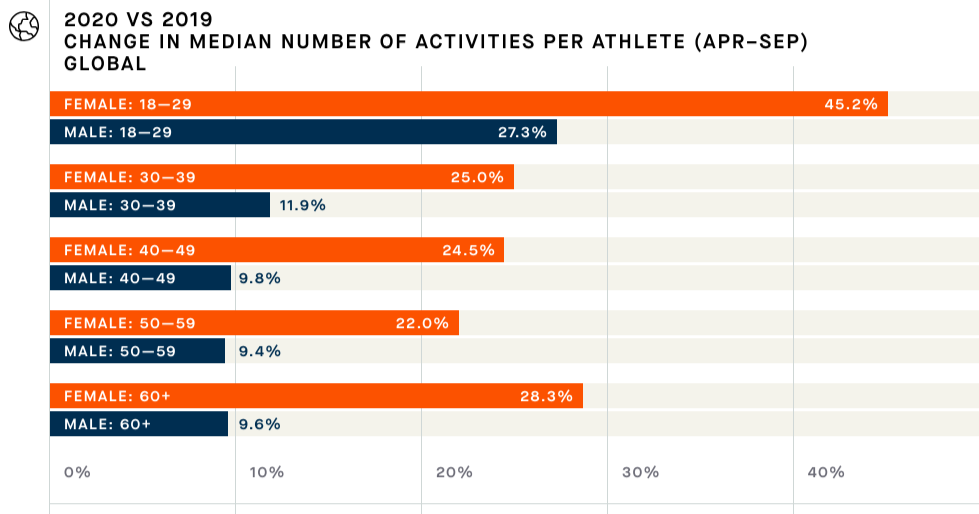
New Routines
Though the start time of activities has shifted closer to where it was in 2019 (likely partly due to the restriction of daylight), May showed a significant change from the prior year. Runs and rides tended to start a little later in the morning or earlier in the afternoon in 2020, while weekend activities starting before 9 a.m. fell off substantially. Is WFH making people sleep in?
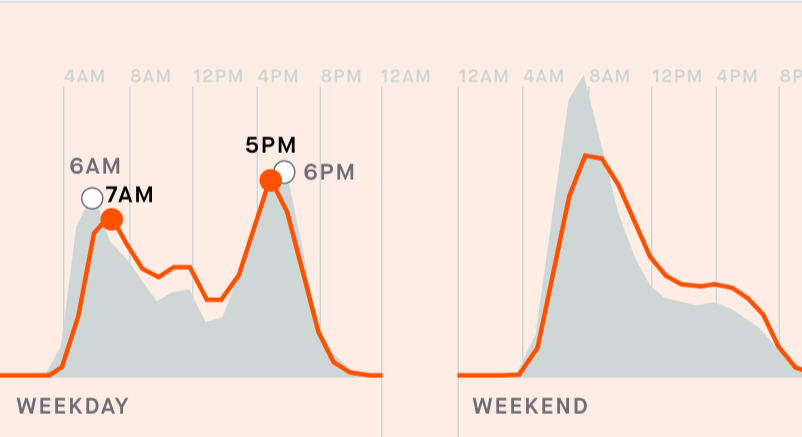
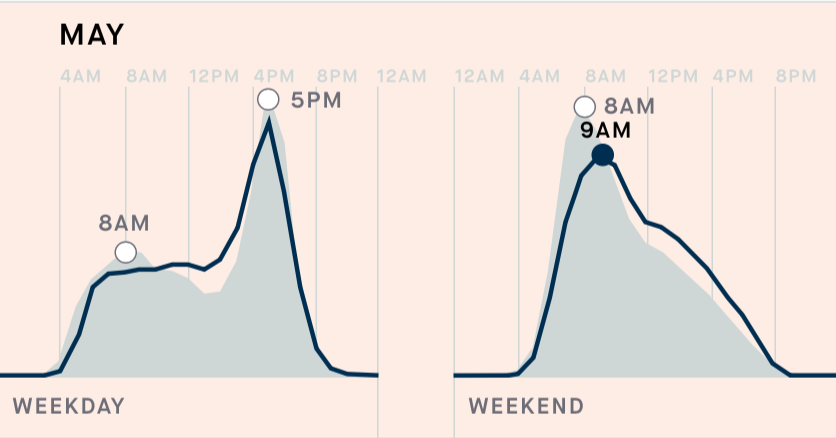
The Competitive Spirit
Triathlons, marathons, gran fondos, and even group workouts were pretty much non existent in 2020, but athletes still found a way to keep the competition going. Going after KOMs, QOMs, solo marathons, vertical challenges, and more all showed up in the data.
Vying for top spots was as heated as ever on segment leaderboards, with 36 percent more QOM and 32 percent more KOM crowns changing hands this year.
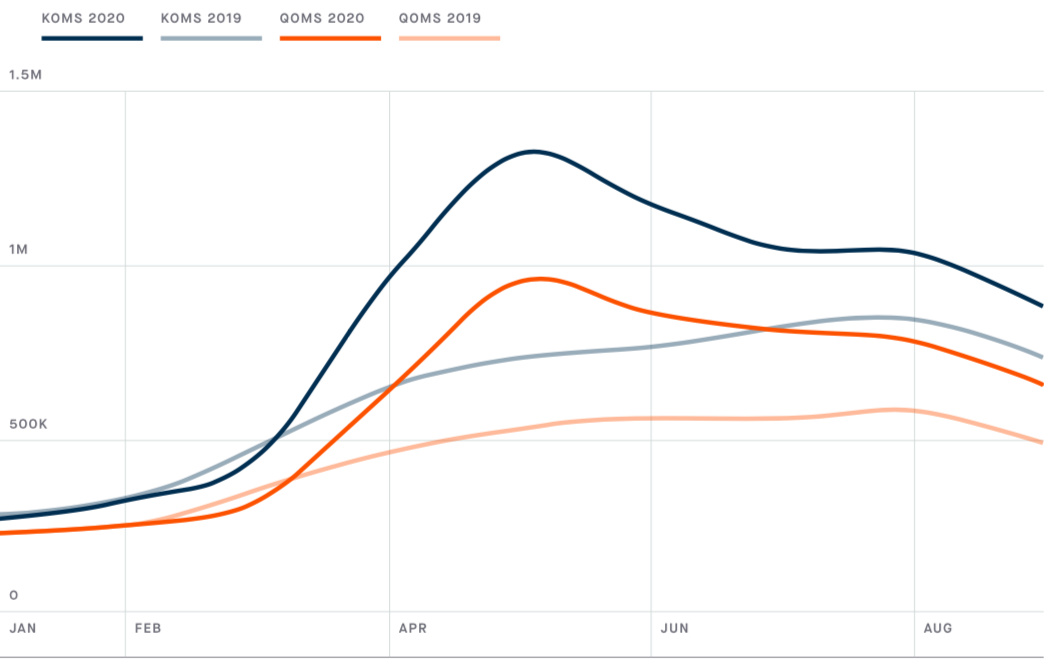
Everesting (accumulating 29,029 ft in one activity by repeating a single climb) took off this year for pro and amateur cyclists alike. While a handful were chasing world records, many just wanted to see if they could complete the effort.
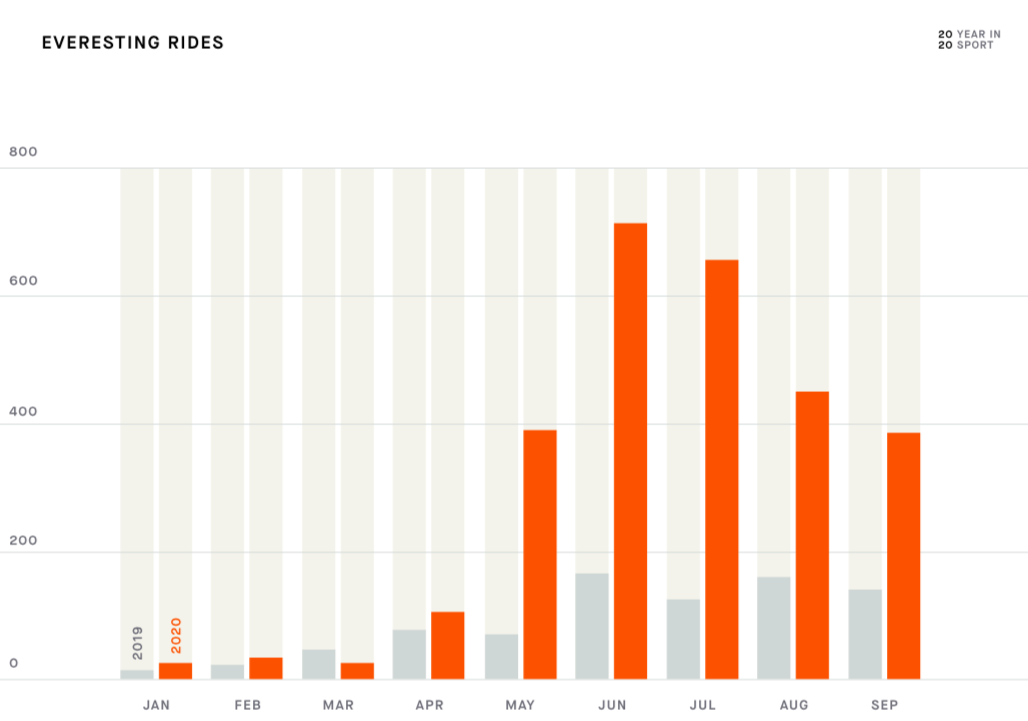
Finally, hundreds of thousands of 26.2-mile runs were uploaded to Strava. Forty-four percent of those were run alone, compared to just 14 percent last year. Of runners who’ve been on Strava since at least 2019, 55 percent hit a new PR in their 5K, 10K, half-marathon or marathon distances this year.
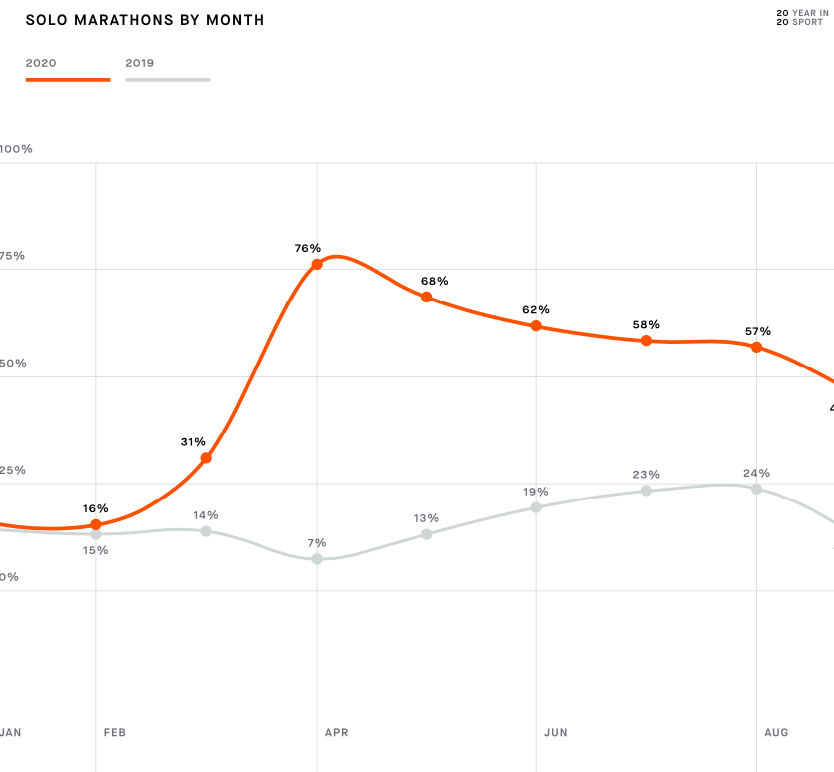
What Does It All Mean for 2021
It could mean a lot for triathletes and our sport! What we know: People are still running and biking—more than ever—and they’re slowly, but surely becoming multisport athletes. Better yet, we haven’t lost our competitive drive, we still want to get faster, stronger, fitter, and we still want to sprint the final stretch to nab that next spot, even if it’s just virtually. (We also know we like to sleep in, but we’ve known that since high school.)
Will we see a surge in new triathletes in 2021? That remains to be seen, but according to this data there are tons of potential, would-be triathletes waiting to break out of the new runners, cyclists, and other athletes that have found endurance sports in the midst of a pandemic.